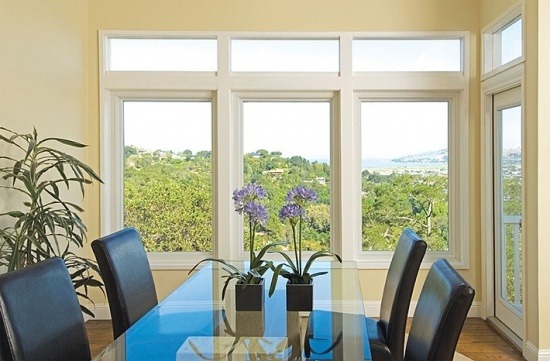


If your electricity bills have been creeping higher and higher, you have probably been searching high and low for ways to bring them back under control. Little changes like turning your water heater temperature down and turning the thermostat down a few degrees may help somewhat, but if you really want to reduce electricity costs, you’re going to have to think big. Replacing the aging windows in your Cincinnati home is one of the best ways to reduce electricity consumption. Here’s a closer look.
Window replacement is often overlooked as a means of reducing electricity use. Its value for reducing fuel consumption is well known. Your furnace burns less fuel when half your heat is not lost through old windows. However, new, tightly sealed windows save electricity, too – not just heating fuel. Even natural gas and oil-burning furnaces have electric blower units, and new, more efficient windows mean these electric blowers don’t have to kick on as often. Replacing your windows this fall before the weather turns too cold will make winter electricity bills much more bearable.
Of course if your home is cooled with air conditioning, new windows will lead to a drastic reduction in electricity use in the summer, too, since AC units are electric. This is true whether your Cincinnati home has a central air conditioner or you use window units.
Since electricity use is so tied to heat loss, any efficient window that blocks heat transfer will lead to lower electricity bills year round. There are a few options you should look for in new windows if reduced electricity consumption is your goal.
Almost all replacement windows these days feature two panes of glass. The layer of air trapped between the two sheets of glass greatly helps reduce heat transfer. If your current windows are single-pane glass, you’ll notice a huge reduction in electricity billswhen you upgrade to double–pane windows. And since double–pane glass windows can get leaky as they age, even replacing old double–pane windows with new ones can lead to huge savings.
Low-E glass, like Andersen’s SmartSun™ glass, has been coated in a thin layer of a metallic substance that reflects heat waves. In the winter, this means the glass reflects heat waves back into your home, which reduces heat loss through the glass and lowers your heating bills–including your electric bills. Don’t worry; low-E glass looks just like regular glass and does not have a metallic sheen.
It’s important to consider the material that encases your glass windows, too. Though vinyl windows have become quite popular recently, the vinyl does tend to peel away from the glass as it ages. So, in a few years, your new vinyl windows may be just as leaky and inefficient as your old windows. A better sash material choice is Fibrex, a wood composite material from Renewal by Andersen. It does not warp when exposed to changes in temperature and humidity, so it stays sealed tightly to the glass and keeps your electricity bills low for years to come.
If you want to reduce electricity bills with new replacement windows, contact Renewal by Andersen to schedule a free consultation in your Cincinnati home. We’ll discuss these and other energy-efficient window options.